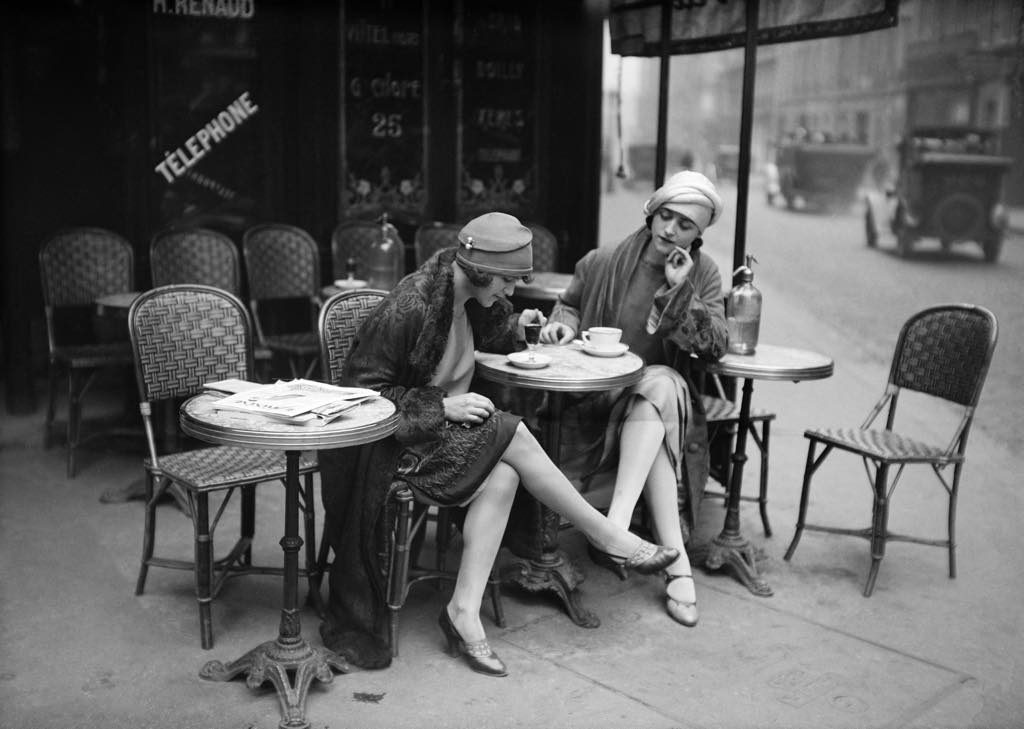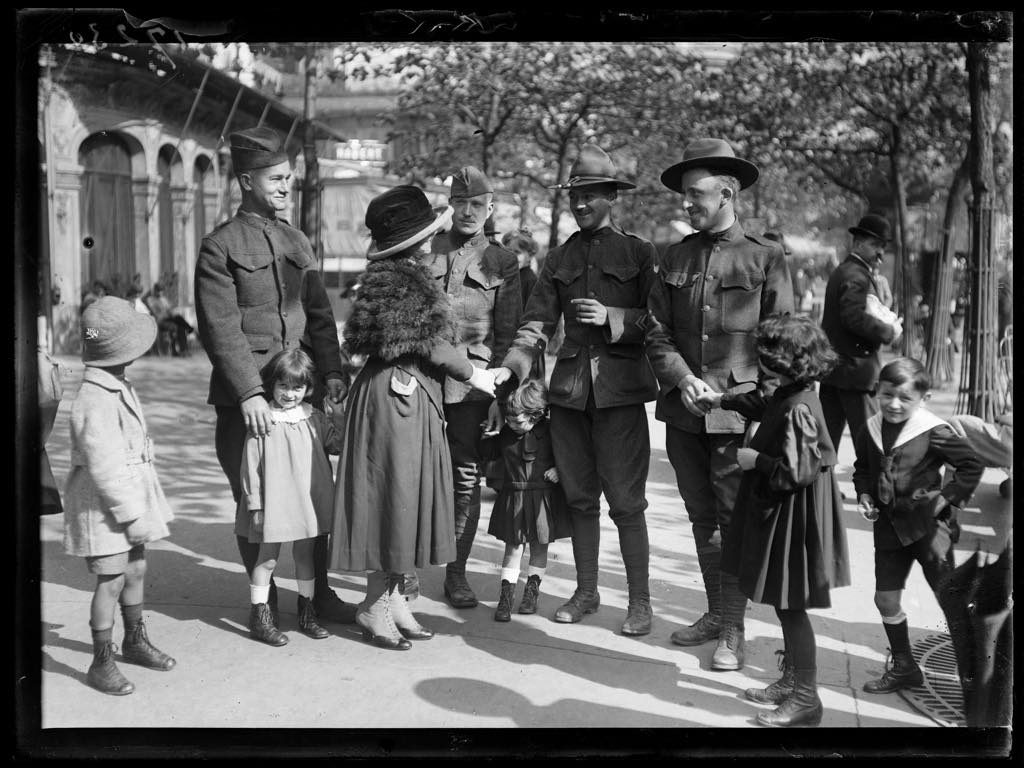
Here’s an unfortunate idea for an exhibition: hold it outdoors in the wintertime and place the photos and lengthy texts high above a busy commercial street undergoing construction work so viewers have to crane their necks to see them while dodging passersby and workers. And, while you’re at it, here’s another bad idea: don’t translate the text into English even though the show is about Americans and other Anglophones in Paris between the two world wars. Et voilà: the exhibition “La Génération Perdue. Des Américains à Paris, 1917-1939.”
The show is based on a just-published (by Éditions Cohen&Cohen) book of the same name by Vincent Bouvet. The coffee-table book includes an impressive collection of photos, some familiar but many of them not.
The show starts with the American participation in World War I, first as volunteers and finally, in 1917, as allies. This taste of life in Europe gave many doughboys (or Sammies, as the French called them, in reference to Uncle Sam), especially those with an artistic or literary bent, a taste of a different, more unfettered lifestyle than they might have had back home. The sobriquet used to describe them came from Gertrude Stein, who famously said to Ernest Hemingway: “All of you young people who served in the war … are a lost generation.”

Among the many charming images is the one of an elegant Parisienne in a fur stole and some equally chic children “fraternizing” with American soldiers on the street. Wartime photos also picture American heiress Anne Morgan, who founded with Ann Dyke the relief organization CARD (Comité Américain pour les Régions Dévastées) to help French civilians affected by the war, and the band of the all-African-American 369th infantry division, the Harlem Hellfighters, led by James Reese Europe, which helped make American jazz a beloved art form in France.
By the end of the 1920s, about 40,000 Americans were living in Paris, divided into two distinct groups: businesspeople and professionals, and writers, musicians and artists. In the section on the American commercial presence in Paris, there is an amusing photo of an entire American-style house, complete with white picket fence, set up inside the Grand Palais for an exhibition.
Things get more interesting when we get to the world of the artists and intellectuals of the Lost Generation. In a 1923 image, literary lions James Joyce, Ezra Pound and Ford Madox Ford pose with art collector and patron John Quinn. Joyce is the personification of an elegant dandy, while the rumpled Pound steps forward aggressively as if he is about to attack the photographer.
Many other important Americans make an appearance in the images: Janet Flanner (pen name “Genêt”), the brilliant writer who supplied The New Yorker with its “Letter from Paris” for 50 years; the great composer Cole Porter, a sometime Paris resident; singer and dancer Josephine Baker; Sylvia Beach, owner of the bookstore Shakespeare & Company and publisher of Joyce’s Ulysses; and, of course Gertrude Stein and Alice B. Toklas.
All this to say that this outdoor exhibition is worth a visit in spite of the small hardships mentioned above.
For information on events in Paris associated with the exhibition, click here. Also, Paris Walks, specialists in Paris walking tours, offers “Lost Generation” and “Hemingway’s Paris” tours.

There is also an excellent exhibition on St. Germain in the mid-20th century at the Galerie Anne et Just Jaecklin at 19 rue Guénégaud, 75006 Paris.